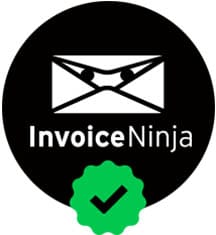
In this tutorial, we will show you how to install Invoice Ninja on CentOS 8. For those of you who didn’t know, Invoice Ninja is a free and open-source web-based application software that can end up being used for invoicing, payments, time traffic monitoring, and many more. It is the particular best solution for invoicing and invoicing customers. You can easily create in addition to send invoices online in seconds. Account Ninja allows you to create your current own custom invoice and show a new live invoice as a PDF record.
This article assumes you have at least basic knowledge of Linux, know how to use the shell, and most importantly, you host your site on your own VPS. The installation is quite simple and assumes you are running in the root account, if not you may need to add ‘sudo‘ to the commands to get root privileges. I will show you the step-by-step installation of Invoice Ninja on CentOS 8.
Prerequisites
- A server running one of the following operating systems: CentOS 8.
- It’s recommended that you use a fresh OS install to prevent any potential issues.
- A
non-root sudo useror access to theroot user. We recommend acting as anon-root sudo user, however, as you can harm your system if you’re not careful when acting as the root.
Install Invoice Ninja on CentOS 8
Step 1. First, let’s start by ensuring your system is up-to-date.
sudo dnf clean all sudo dnf update
Step 2. Installing LAMP Stack.
If you don’t have a LAMP stack already installed on your server, you can follow our guide here.
Step 3. Installing Invoice Ninja on CentOS 8.
Now we download Invoice Ninja packages from the official source:
wget https://download.invoiceninja.com/ -O invoice-ninja.zip
Unpack the Invoice Ninja archive to the document root directory on your server:
unzip invoice-ninja.zip sudo mv ninja /var/www/html/invoice-ninja
We will need to change some folders permissions:
sudo chown -R apache:apache /var/www/html/invoice-ninja sudo chmod -R 755 /var/www/html/invoice-ninja/storage/
Step 4. Configuring MariaDB for WordPress.
By default, MariaDB is not hardened. You can secure MariaDB using the mysql_secure_installation script. You should read and below each step carefully which will set a root password, remove anonymous users, disallow remote root login, and remove the test database and access to secure MariaDB.
mysql_secure_installation
Configure it like this:
- Set root password? [Y/n] y - Remove anonymous users? [Y/n] y - Disallow root login remotely? [Y/n] y - Remove test database and access to it? [Y/n] y - Reload privilege tables now? [Y/n] y
Next, we will need to log in to the MariaDB console and create a database for Invoice Ninja. Run the following command:
mysql -u root -p
This will prompt you for a password, so enter your MariaDB root password and hit Enter. Once you are logged in to your database server you need to create a database for Invoice Ninja installation:
MariaDB [(none)]> CREATE DATABASE invoice_ninja; MariaDB [(none)]> GRANT ALL ON invoice_ninja.* TO invoice_ninja@localhost IDENTIFIED BY "Your-Passwd"; MariaDB [(none)]> FLUSH PRIVILEGES MariaDB [(none)]> exit
Step 5. Configuring Apache for Invoice Ninja.
We will create an Apache virtual host for your Invoice Ninja. First, create ‘/etc/apache/conf.d/vhosts.conf’ file with using a text editor of your choice:
nano /etc/apache/conf.d/vhosts.conf IncludeOptional vhosts.d/*.conf
Next, create the virtual host:
mkdir /etc/apache/vhosts.d/ nano /etc/apache/vhosts.d/yourdomain.com.conf
Add the following lines:
<VirtualHost YOUR_SERVER_IP:80> ServerAdmin webmaster@yourdomain.com DocumentRoot "/var/www/html/invoice-ninja/public" ServerName yourdomain.com ServerAlias www.yourdomain.com ErrorLog "/var/log/httpd/yourdomain.com-error_log" CustomLog "/var/log/httpd/yourdomain.com-access_log" combined <Directory "/var/www/html/invoice-ninja/public"> DirectoryIndex index.html index.php Options FollowSymLinks AllowOverride All Require all granted </Directory> </VirtualHost>
Save and close the file. Restart the Apache service for the changes to take effect:
systemctl restart httpd.service systemctl enable httpd.service
Step 6. Installing SSL for Apache on CentOS 8.
Run these commands on the command line on the machine to install Certbot:
wget https://dl.eff.org/certbot-auto sudo mv certbot-auto /usr/local/bin/certbot-auto sudo chown root /usr/local/bin/certbot-auto sudo chmod 0755 /usr/local/bin/certbot-auto
Then, run this command to get a certificate and have Certbot edit your Apache configuration automatically:
sudo /usr/local/bin/certbot-auto --apache
Step 7. Configure FirewallD Invoice Ninja.
Before accessing the Invoice Ninja web interface, you will need to allow HTTP and HTTPS service through firewalld:
sudo firewall-cmd --add-port={http,https} --permanent
sudo firewall-cmd --reload
Step 8. Accessing Invoice Ninja.
Invoice Ninja will be available on HTTP port 80 by default. Open your favorite browser and navigate to https://your-domain.com/ or https://server-ip-address and complete the required steps to finish the installation.
Congratulations! You have successfully installed Invoice Ninja. Thanks for using this tutorial for installing Invoice Ninja on your CentOS 8 system. For additional help or useful information, we recommend you check the official Invoice Ninja website.